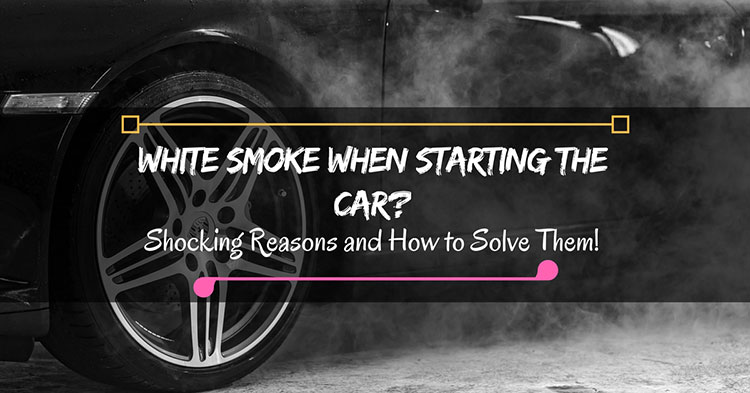
White Smoke When Starting the Car? Shocking Reasons and How to Solve Them!
What causes a car to backfire and what causes white smoke when starting it are among the most common questions most car owners have to grapple with daily. I own a 2004 Honda Accord. Jeez, i love my ride!
More...
A couple of months ago, i noticed some large amount of white smoke when starting the car. I observed the smoke three more times emanating from my car’s rear. It got me wondering, what might be the issue?
Well, in one of the instances, the engine was somewhat cold, once warm. When i took my car to the Honda dealer, he found nothing. However, he advised me to keep track of the instances. I want to share with you what i learnt about this car issue and how i solved the problem effectively.
What Causes White Smoke When Starting Your Car?
White smoke when starting a car is highly common during the cooler days. This is probably because of the steam created when the engine burns off condensation. However, if the white smoke issue continues into the warmer months, it’s an indication of trouble.
Several reasons cause white smoke when you start your car.
Here are some of the reasons:
1. Contaminated Coolant

Via Chrisfix
In some instances, you can experience white smoke because of contaminated coolant inside the radiator. Its presence allows the coolant to find into your vehicle’s combustion areas.
Upon entering the combustion area, it vaporizes and then spews out from the car’s exhaust in form of white fog. The best remedy for such situations is to have a professional replace the gasket.
The other effective option is to replace the contaminated coolant completely.
Alternatively, you can try to use a neutralizing flush in order to prevent the radiator acid from causing any harm.
2. Internal Coolant Leaks
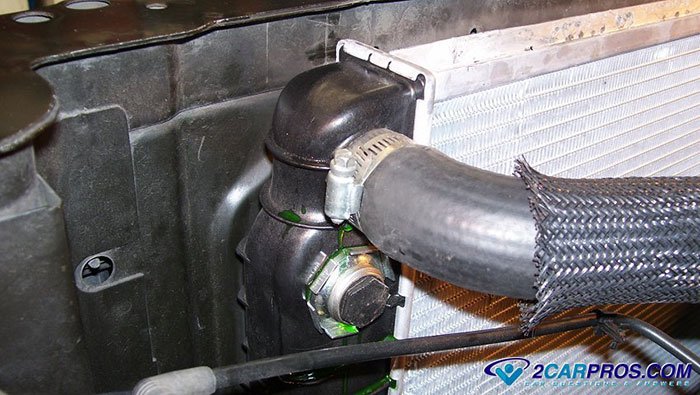
Internal coolant leaks are the other cause of white smoke when starting your car. The two major indicators of internal coolant leaks include:
- Billowing white exhaust smoke that’s accompanied a low coolant reservoir or a sweet odor
- Contamination of the engine oil thus giving it a milky, frothy milky appearance
Internal coolant leaks, however small, can produce white smoke for sure.
3. Cold Weather

If you notice some white smoke upon car startup during cold weather, it’s probably due to oil leaks that pass the valves. The oil then mixes with moisture present within the car’s exhaust.
Anytime you park your vehicle under cold conditions, it becomes too cool. Consequently, air shrinks and begins producing moisture. In fact, it can make as much as one cup of water inside its motor and exhaust system.
Consequently, whenever you ignite after some hours, like in the morning after cooling throughout the night, the moisture comes from the exhaust as white smoke.
What You Should Do When Your Car Emits White Smoke
If you notice white smoke when starting your car, here’s what you need to do:
Check on the Coolant Levels
Stop your car immediately! Ensure that your car’s radiator contains an appropriate amount of antifreeze. You should change it if the levels aren’t proper.
Follow these steps to initiate the changes:
Step 1:

Via libertymutual.com
Before changing, ensure that you adhere to all necessary safety precautions by carefully reading your car’s user manual. For instance, refrain from spilling the coolant. Secondly, keep your children and pets away from the area.
Step 2:
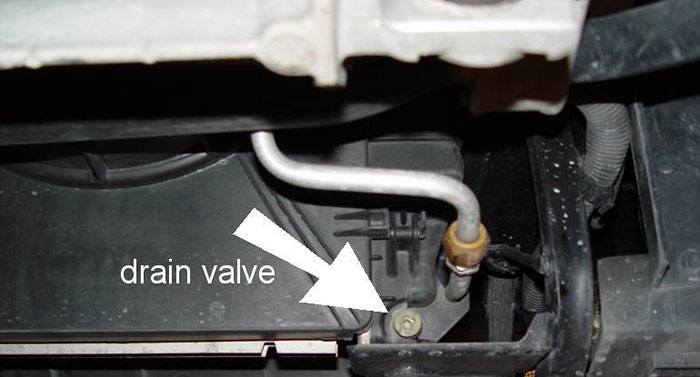
Via iammoon.com
Put your drain pan beneath the radiator’s petcock drain valve. Utilize a pair of pliers or your hand to remove the drain valve.
Step 3:
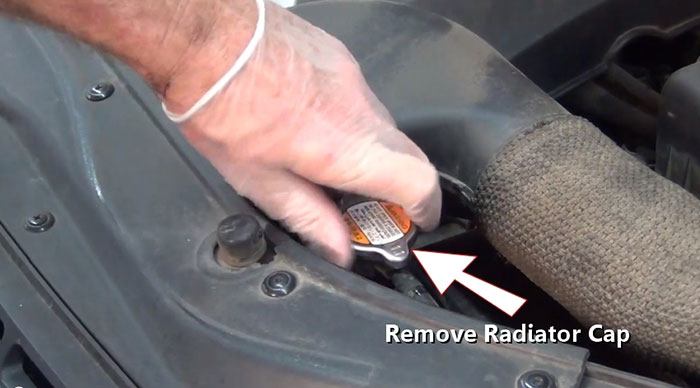
Via 2carpros.com
This is the most important step. It’s here that you change the engine coolant. The first thing you should do is allow the remove the existing coolant from the radiator.To do that, you need to remove the radiator pressure cap.
Secondly, utilize a wrench to remove the engine plugs. Allow the anti-freeze to flow into the drain pan from the engine block. Before proceeding to the next step, ensure that you’ve drained all the coolant from the coolant recovery tank and radiator.
Step 4:
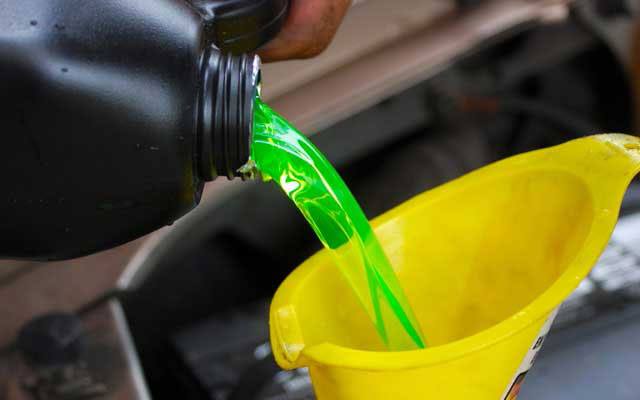
Via theaa.com
Now you must reinstall the petrock and engine block drain plugs. By carefully reading your car’s service repair manual, you’ll know the exact amount of anti-freeze your car should have.
For example, if the manual indicates four quarts of coolant, you should add two quarts water and two quarts of ant-freeze. Slowly pour the 50-50 mixture into the filler neck of the radiator using a funnel.
Step 5:
After successfully changing the coolant, you now need to turn the engine on. Let it idle for several minutes. As the engine heats up, the radiator cap shouldn’t be on. Next, turn the heater of the car to hot or high position.
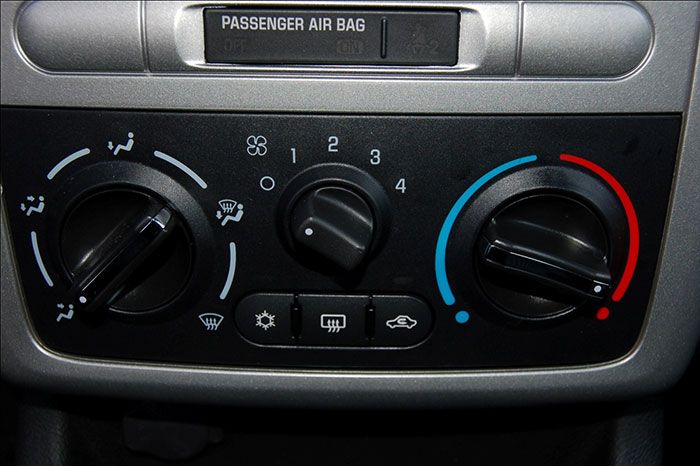
Via macsworldwide.wordpress.com
Check the radiator to verify whether the coolant is circulating. If it is, turn on the radiator cap. Also, ensure that the car’s coolant recovery tank is completely full.Test the coolant’s protection level. You are done.
Change Contaminated Engine Oil
For your car engine to operate optimally, you must change the engine oil regularly. Continuing driving your car with contaminated oil causes serious damage to the engine. It can end up costing your expensive replacements and repairs.
Do the following to solve this issue:
- Check whether the anti-freeze has contaminated the car’s engine oil.
- One way of doing this is by looking at the area beneath the engine oil filler cap or at the engine oil dipstick. The anti-freeze is contaminated if it resembles a chocolate milkshake.
- If it’s contaminated, don’t start your engine; instead contact your mechanic immediately.
For a more comprehensive guide on how to change contaminated engine oil in your car, read this article. You can also watch the video below to know how to do:
In Summary!
White smoke when starting your car is a sure sign that there’s some fault of varying severity. Among the top causes of this issue is a cracked engine block, blown head gasket, engine overheating etc.
When you notice white smoke, and especially a thick one, you must seek professional help immediately. Doing so will save you costly repairs in the long run.
One of the things i’ve learnt over the years i’ve been using my car is to address any issue immediately it happens. I’d also advice you to do the same.
I hope i kept my promise of equipping with extensive knowledge regarding white smoke when starting your car. It’s also my hope that you’ll find the above information helpful.
If you enjoyed reading the primer, feel free to share it. We might help other folks suffering from the same issue. You never know! Sharing is caring, right?
